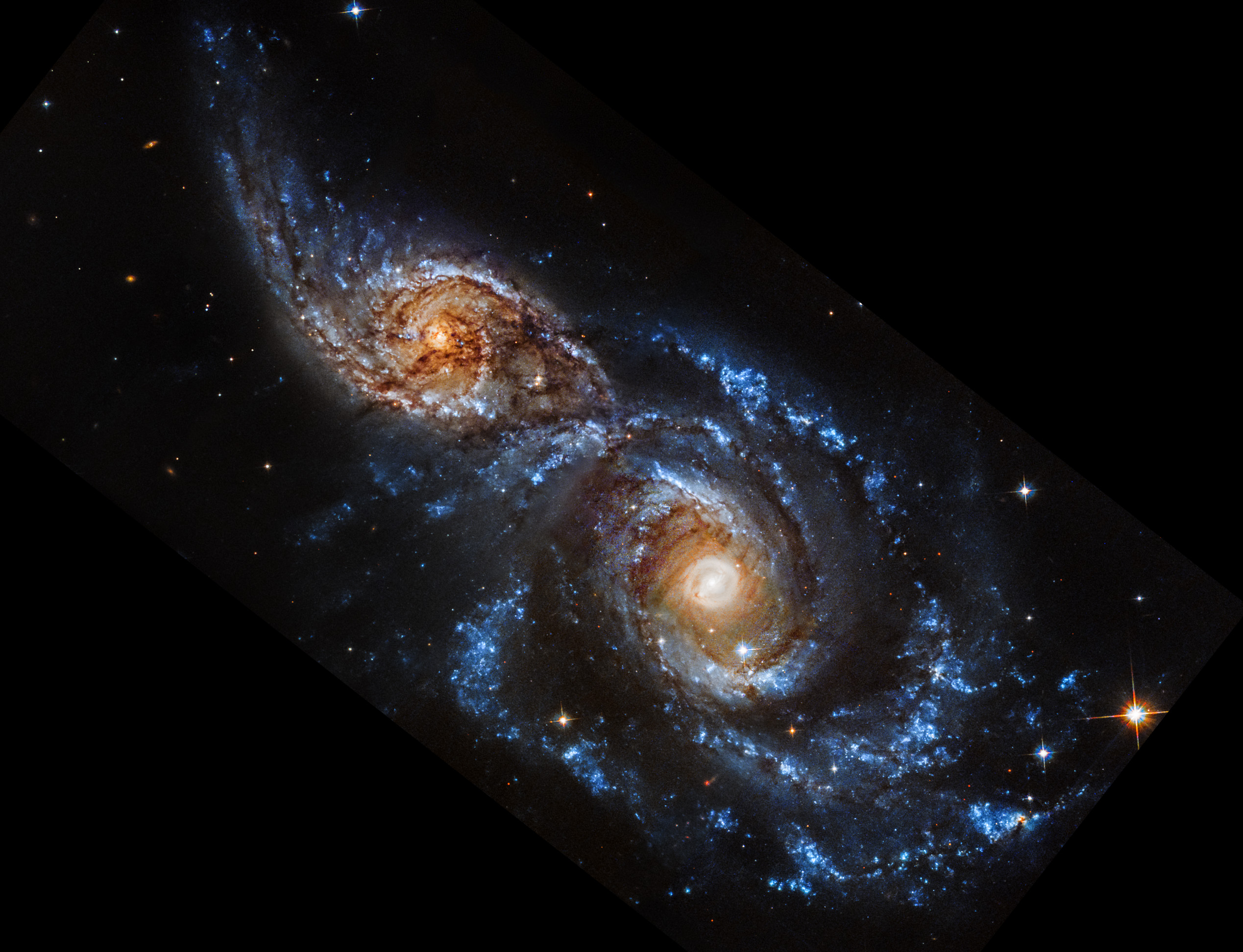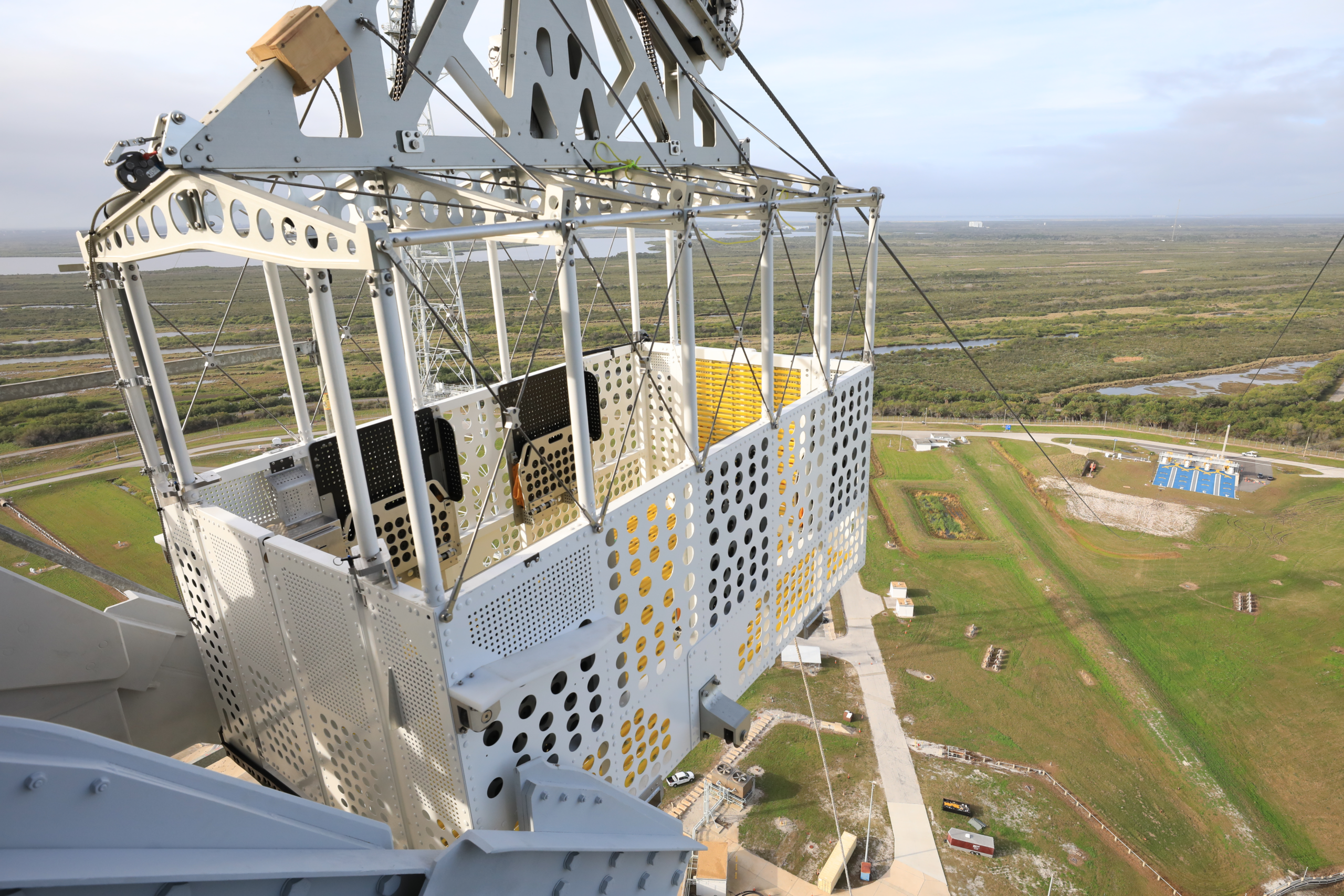Hubble (UV+Visible) , The Hubble View cut from two views of the same object shown side by side.. The Hubble observation is at left, and the Webb observation is at right. Both show an angled pair of spiral galaxies, IC 2163 at top left, and NGC 2207, at bottom right. IC 2163 is smaller than NGC 2207, and they appear to be overlapping at the center diagonal. In the Hubble image, the galaxies’ cores appear white at the center, and more orange overall. Both galaxies have bright blue spiral arms, and are interlaced with dark brown, irregular dust lanes. Tiny galaxies and a few foreground stars dot the black background of space. There are no data along the bottom left, top right, and bottom right corners. In the Webb image, the galaxies’ cores appear bright white, transitioning to spiral arms that are also bright white, but flecked with pink dots. Tiny galaxies and a few foreground stars dot the entire black background of space.
Webb (MIRI) , The Webb View cut from two views of the same object shown side by side.. The Hubble observation is at left, and the Webb observation is at right. Both show an angled pair of spiral galaxies, IC 2163 at top left, and NGC 2207, at bottom right. IC 2163 is smaller than NGC 2207, and they appear to be overlapping at the center diagonal. In the Hubble image, the galaxies’ cores appear white at the center, and more orange overall. Both galaxies have bright blue spiral arms, and are interlaced with dark brown, irregular dust lanes. Tiny galaxies and a few foreground stars dot the black background of space. There are no data along the bottom left, top right, and bottom right corners. In the Webb image, the galaxies’ cores appear bright white, transitioning to spiral arms that are also bright white, but flecked with pink dots. Tiny galaxies and a few foreground stars dot the entire black background of space.





